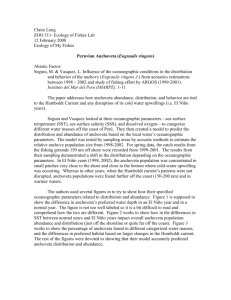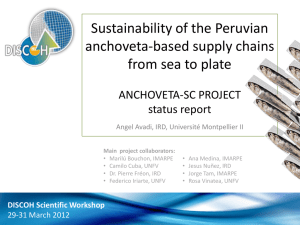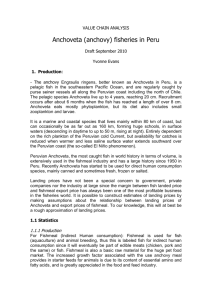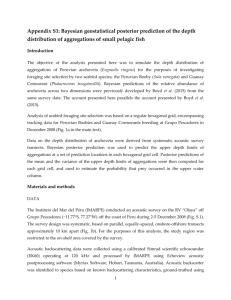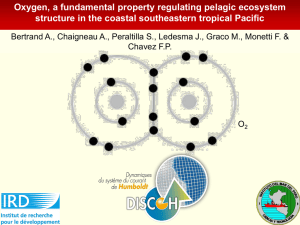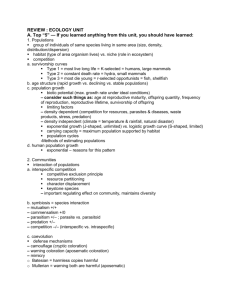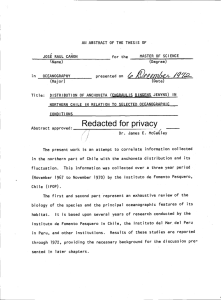Spatiotemporal and size-based variability in anchoveta (Engraulis
advertisement
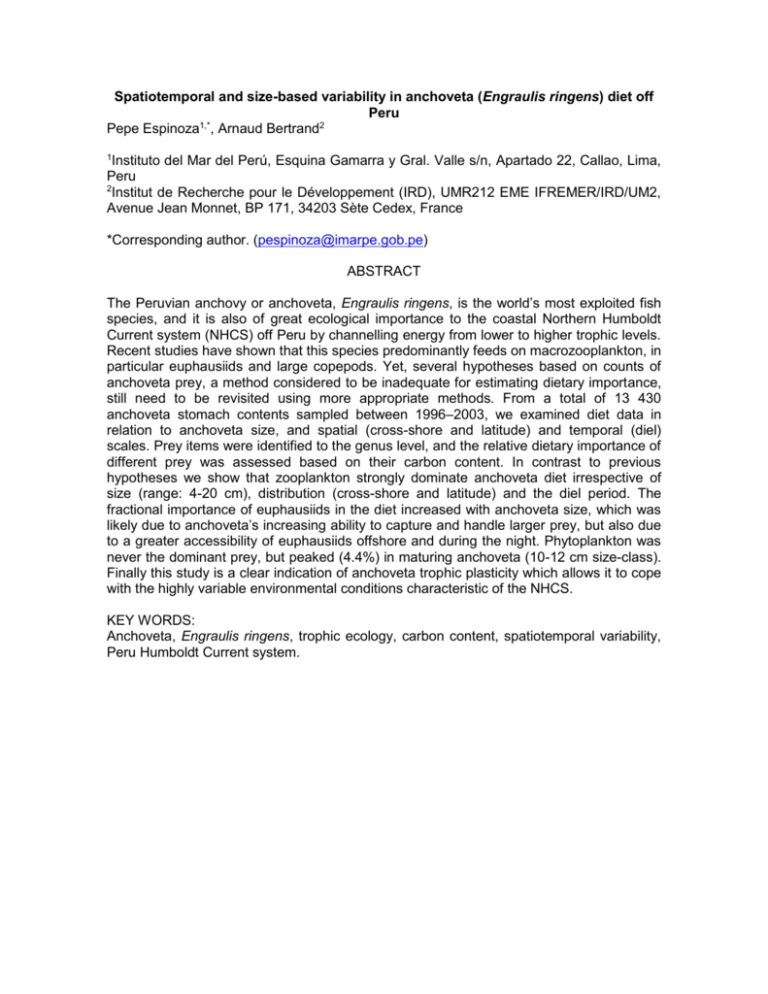
Spatiotemporal and size-based variability in anchoveta (Engraulis ringens) diet off Peru Pepe Espinoza1,*, Arnaud Bertrand2 1 Instituto del Mar del Perú, Esquina Gamarra y Gral. Valle s/n, Apartado 22, Callao, Lima, Peru 2 Institut de Recherche pour le Développement (IRD), UMR212 EME IFREMER/IRD/UM2, Avenue Jean Monnet, BP 171, 34203 Sète Cedex, France *Corresponding author. (pespinoza@imarpe.gob.pe) ABSTRACT The Peruvian anchovy or anchoveta, Engraulis ringens, is the world’s most exploited fish species, and it is also of great ecological importance to the coastal Northern Humboldt Current system (NHCS) off Peru by channelling energy from lower to higher trophic levels. Recent studies have shown that this species predominantly feeds on macrozooplankton, in particular euphausiids and large copepods. Yet, several hypotheses based on counts of anchoveta prey, a method considered to be inadequate for estimating dietary importance, still need to be revisited using more appropriate methods. From a total of 13 430 anchoveta stomach contents sampled between 1996–2003, we examined diet data in relation to anchoveta size, and spatial (cross-shore and latitude) and temporal (diel) scales. Prey items were identified to the genus level, and the relative dietary importance of different prey was assessed based on their carbon content. In contrast to previous hypotheses we show that zooplankton strongly dominate anchoveta diet irrespective of size (range: 4-20 cm), distribution (cross-shore and latitude) and the diel period. The fractional importance of euphausiids in the diet increased with anchoveta size, which was likely due to anchoveta’s increasing ability to capture and handle larger prey, but also due to a greater accessibility of euphausiids offshore and during the night. Phytoplankton was never the dominant prey, but peaked (4.4%) in maturing anchoveta (10-12 cm size-class). Finally this study is a clear indication of anchoveta trophic plasticity which allows it to cope with the highly variable environmental conditions characteristic of the NHCS. KEY WORDS: Anchoveta, Engraulis ringens, trophic ecology, carbon content, spatiotemporal variability, Peru Humboldt Current system.
